Did you know nearly 40% of pet poisonings in homes are linked to common household substances—including mishandled essential oils? Protecting your dog starts with understanding what’s truly safe and what isn’t.
If you love the health and wellness boost that essential oils can bring to your life, you might wonder if your dog can enjoy similar benefits. But did you realize a single drop of the wrong oil can spell danger for your furry friend? Essential oils safe for dogs require special consideration: What’s soothing for you might be risky—even toxic—for pets. This guide reveals critical practices, safe alternatives, and the most common, dangerous mistakes dog owners make with essential oils. Read on to ensure your home remains a safe and calm haven for your dog.
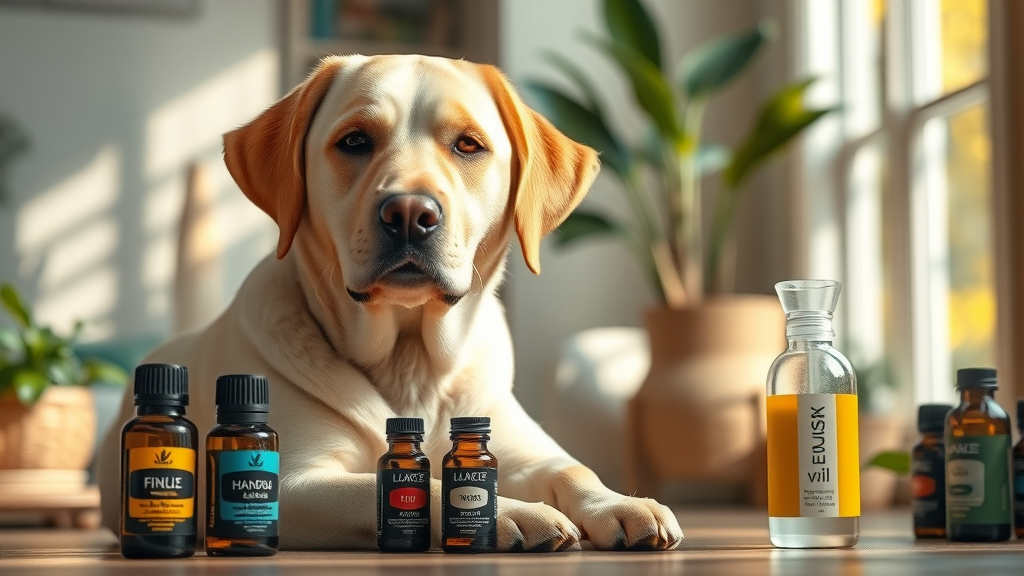
Understanding Essential Oils Safe For Dogs: The Core Principles
Essential oils safe for dogs refers specifically to those plant-derived oils that can be used around canines with minimal risk of toxicity—when diluted and administered responsibly. Not all essential oils are safe for dogs, and some can cause severe reactions or even be life-threatening. Dogs possess a more sensitive central nervous system and different metabolic processes compared to humans, making them susceptible to adverse reactions from a wide range of substances. What’s soothing for people and pets is not always the same; this is especially true for dogs.
What makes certain essential oils hazardous to dogs is their highly concentrated nature and the presence of compounds like phenols, terpenes, and ketones, which dogs can’t process efficiently. For example, tea tree and ylang ylang oils, though popular, are dangerous for canine friends. The key to keeping your dog safe is knowing which oils are safe for dogs and always using a carrier oil. Carrier oils dilute essential oils, making them gentler for topical or aromatic use—a necessary step that protects your pet’s delicate skin, fur, and respiratory system.
- Definition of essential oils safe for dogs
- Why certain essential oils are hazardous to dogs
- Practical examples of safe use and risk assessment
- Introducing carrier oil importance
What Owners Will Learn About Essential Oils Safe For Dogs
This article will clarify the key distinctions between oils that are safe for dogs and those that are not , so you can make well-informed decisions for your pet’s health. You’ll learn essential tips for responsible essential oil use—like the importance of carrier oils, proper dilution, and the risks of highly concentrated products. We’ll also teach you how to prevent unintentional harm caused by common mistakes, such as using an essential oil diffuser with the wrong aroma or forgetting to check for safe ingredients.
Plus, you’ll get a quick and easy checklist for creating dog-safe routines with essential oils, so you can confidently support your pup’s comfort and wellness without risking their well-being.
- Key distinctions between oils that are safe for dogs and those that are not
- Essential tips for responsible use
- How to prevent unintentional harm
- Quick checklist for dog-safe essential oil routines
Which Essential Oils Are Safe For Dogs? The Comprehensive List
Not all essential oils are created equal when it comes to your dog’s safety. Here, we present the definitive guide to essential oils safe for dogs , complete with their main benefits, any risks, and recommended carrier oils for proper dilution. Being aware of this information empowers pet owners to make informed, responsible decisions in fostering a healthy environment for their four-legged companions.
Remember, even with oils generally regarded as safe, responsible use and proper dilution with a carrier oil are essential. Some oils may support calm, skin comfort, or even digestive health when used correctly, while others pose silent risks. Always introduce new essential oils with dogs slowly, and monitor closely for any signs of discomfort or allergic responses.
| Essential Oil | Safe for Dogs? | Benefits | Risks | Recommended Carrier Oil |
|---|---|---|---|---|
| Lavender | Yes (when diluted) | Calming, anxiety relief, odor neutralization | Skin irritation if undiluted, rare allergies | Coconut, jojoba, or almond |
| Chamomile | Yes (when diluted) | Soothes skin, reduces stress and anxiety | Possible mild skin reaction | Almond, coconut |
| Cardamom | Yes (when diluted) | Digestive support, anti-bacterial | May cause minor skin sensitivity | Jojoba, coconut |
| Frankincense | Yes (when diluted) | Promotes immune and wellness, calming | Low risk when diluted | Coconut, almond |
| Tea Tree | No | None for dogs; highly toxic | Nervous system effects, liver failure | Never recommended |
| Peppermint | No | None for dogs; irritant | Respiratory, liver toxicity | Never recommended |
| Sweet Birch, Ylang Ylang, Pine, Citrus, Wintergreen | No | None for dogs | Range of toxicities: nervous system depression, GI upset, skin burns, kidney issues | Never recommended |
- Lavender essential oil: Calming, gentle when diluted
- Chamomile essential oil: Soothes skin and anxiety
- Cardamom essential oil: Digestive support
- Frankincense essential oil: Promotes wellness
- Carrier oil guidance for every essential oil on the list
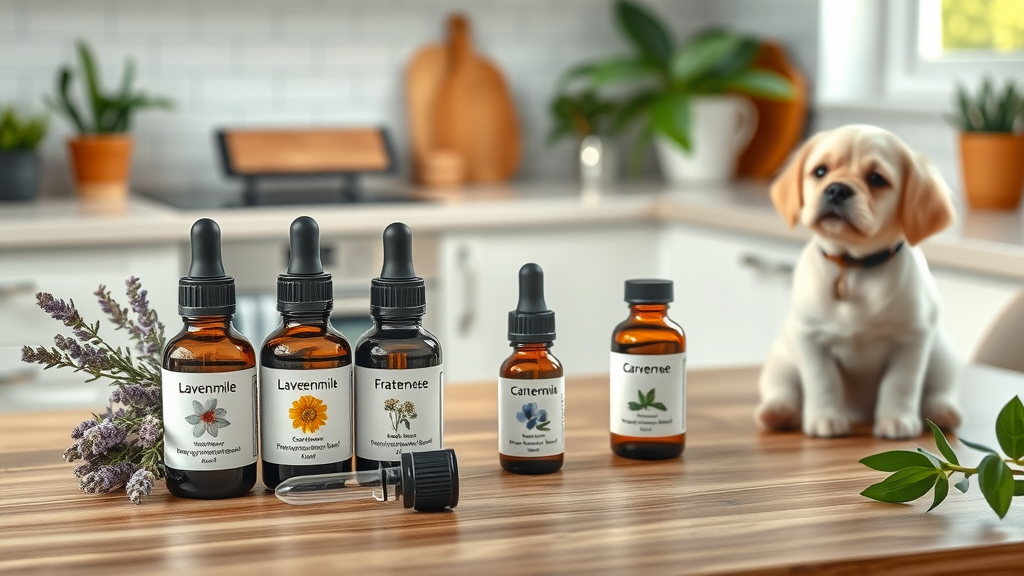
“It’s not just about the oil—it’s about the dose, the dilution, and the dog. Always err on the side of caution and go natural, never neat.” — DVM, Veterinary Aromatherapy Specialist
Essential Oil Mistakes to Avoid: Silently Risking Your Dog’s Health
Many dog owners, even those with the best intentions, can easily make mistakes that put their pet’s health at risk. Diffusing unsafe essential oils around dogs —like tea tree or peppermint—can expose your pet to respiratory issues or even central nervous system complications. Another common error is forgetting to use a suitable carrier oil before topical application or believing all “natural” oils are inherently safe. Essential oils are highly concentrated and can overwhelm a dog’s system if not properly diluted.
Even when choosing a popular oil product, it’s vital to research which oils are safe for dogs and how much you should actually use. Household oils toxic to pets , such as ylang ylang, citrus, and pine, are often used in cleaning or air freshening blends but can cause pet poison incidents if used in an oil diffuser around your dog. Responsible use starts with education, an understanding of your own diffuser’s reach, and monitoring your dog for signs of discomfort.
- Diffusing unsafe essential oils around dogs
- Forgetting to use a suitable carrier oil
- Overlooking the power of concentrated oils with dogs
- Not researching oils that are safe
- Common household oils toxic to pets

Are All Essential Oils Safe For Dogs? Let’s Debunk the Myths
A widespread misconception is that all essential oils, because they're derived from plants, are safe for people and pets alike. This couldn’t be further from the truth. Even some popular options, like tea tree , eucalyptus , and peppermint , are frequently cited by holistic veterinarians and the ASPCA as causes of pet poison and adverse reactions. These oils can cause harm ranging from skin burns to severe central nervous system symptoms, respiratory distress, or even fatal outcomes in extreme exposures.
Dog products sold as “tick prevention” or “natural flea and tick spray” sometimes use a wide range of essential oils without clarifying if all ingredients are dog-friendly. Just because something is labeled “natural” does not make it automatically safe for your dog. Always examine product labels, verify ingredients with a holistic vet, and crosscheck information with recent scientific evidence.
- Tea tree, eucalyptus, peppermint: Why these popular essential oils can harm dogs
- Tick prevention products—are all essential oils safe?
- How ‘natural’ doesn’t always mean ‘safe for dogs’
Top Essential Oils To Never Use With Dogs—And Why
- Tea tree oil: Severe toxicity
- Peppermint oil: Respiratory and liver risk
- Citrus oils: GI distress and irritation
- Wintergreen: Blood clotting issues
- Pine oils: Kidney strain
- Cinnamon and clove: Overstimulation and skin burns
- Scientific studies on essential oils and dog safety
- Symptoms of essential oil toxicity
Scientific studies published by veterinary toxicology departments have repeatedly shown that oils such as tea tree, peppermint, sweet birch, and clove are especially potent in causing central nervous system or liver toxicity. The signs of toxicity can range from vomiting and drooling to seizures, lethargy, or collapse—requiring immediate intervention. If you suspect your dog has been exposed to any of these oils, contact your veterinarian promptly.
Remember that some signs of toxicity—such as tremors, ataxia, or respiratory distress—can occur quickly after exposure to a harmful oil product. Always store essential oils out of reach and avoid diffusing or using “never safe” oils listed above anywhere dogs may come into contact.
The Role of Carrier Oil In Using Essential Oils Safe For Dogs

Carrier oils are neutral, fatty oils derived from seeds or nuts that serve as a safe base for diluting potent essential oils before use with dogs. Common examples include coconut oil, almond oil, and jojoba oil, each providing nourishment while making essential oil molecules less harsh on delicate canine skin and fur. The critical principle: never use undiluted essential oils on your dog, regardless of the original plant source or perceived safety.
Carrier oil dilution is the gold standard for reducing irritation and allowing beneficial compounds to be gradually absorbed. Without proper dilution, even oils generally recognized as safe can cause skin burns, hair loss, or breathing difficulty. Recommended carrier oils include fractionated coconut oil for most topical applications, almond oil for sensitive skin, and jojoba for a light touch.
- What is a carrier oil?
- Why carrier oil dilution is critical
- Recommended carrier oils for safe use
How To Properly Dilute Essential Oils Safe For Dogs
The safe dilution ratio for essential oils safe for dogs is typically 1–2 drops of essential oil to one tablespoon of carrier oil (approximately a 0.25%–0.5% dilution). This ratio ensures safety when massaging the oil into skin, applying to fur, or using in a spray for tick prevention or calming purposes. Always use glass containers for oil blends, as plastics can degrade and contaminate the mix. Remember to shake well before every use and label all mixes clearly.
Here’s a quick step-by-step guide:
- Add 1–2 drops of dog-safe essential oil (lavender, chamomile, cardamom, or frankincense) to 1 tablespoon of carrier oil (coconut, almond, or jojoba).
- Mix thoroughly and store in a clean, dark glass bottle.
- Use sparingly for direct application to fur or on a soft cloth for aromatherapy. For diffusion, start with the minimum amount in a well-ventilated room.
When applying diluted oils to paws, fur, or for air diffusion, always monitor your dog’s reactions. Discontinue use if you notice signs of aversion, licking, drooling, or irritation.
- Safe dilution ratios
- Step-by-step dilution guide
- Using carrier oil for paws, fur, and air diffusion
Essential Oils With Dogs: Practical Application Methods
Proper application is as important as choosing the right oil. Essential oils safe for dogs should only be used after thorough dilution and never given orally to pets. Topical use involves gentle application to targeted skin areas while avoiding sensitive parts like the nose, eyes, mouth, or genitals. Use your hands (gloved if needed) to gently massage diluted oil into a small area, observing for any skin changes over the next 24 hours.
Aromatic uses—such as oil diffusers or evaporating blends in a well-ventilated space—can calm the dog’s nerves or neutralize odors. But limit exposure and keep your pet’s bedding and water bowls far from the source. For tick prevention, only use recipes created or approved by holistic veterinarians, as their blends prioritize oils that are safe for dogs and careful carrier oil selection.
- How to apply diluted essential oil safely
- Topical vs. aromatic uses
- Avoiding oral administration
- Essential oils for safe dog tick prevention
Recognizing Signs Of Essential Oil Toxicity In Dogs
Essential oil toxicity symptoms can develop swiftly—watch for early warnings like excessive drooling, sudden lethargy, wobbling or trembling, vomiting, and labored breathing. Dogs may also paw at their face, whine, or hide after exposure. In severe cases, seizures, collapse, or liver injury may occur, especially with hazardous oils such as tea tree or peppermint.
If you suspect your dog has been exposed to a toxic essential oil product, remove the source and ensure fresh air immediately. Contact your veterinarian for urgent advice, and never attempt to induce vomiting without professional guidance, as some oils can cause additional harm on their way back up. Quick action is key to successful recovery.
- Early warnings: Drooling, lethargy, and tremors
- What to do in case of exposure — first aid tips
- Which essential oils trigger the fastest reactions

Essential Oils Safe For Dogs In Tick Prevention—Fact or Fiction?
There’s growing interest in essential oils safe for dogs for flea and tick prevention, but not all natural solutions are equal. Science-backed evidence supports the safe use of certain oils—like diluted lavender, chamomile, and a few citrus-free blends—when used as part of a veterinary-approved tick spray or essential oil diffuser. However, many commercial tick and flea sprays on the market include risky oils such as peppermint or tea tree and should be avoided.
The best holistic tick prevention protocols combine regular topical checks, environmental management, and, if necessary, small amounts of diluted, dog-safe oils applied with a carrier oil. If in doubt, always consult your holistic vet before introducing a new product or blend.
- Science behind essential oils for ticks in dogs
- Which essential oils are effective and safe, which are harmful
- Best ways to treat and prevent tick infestations holistically
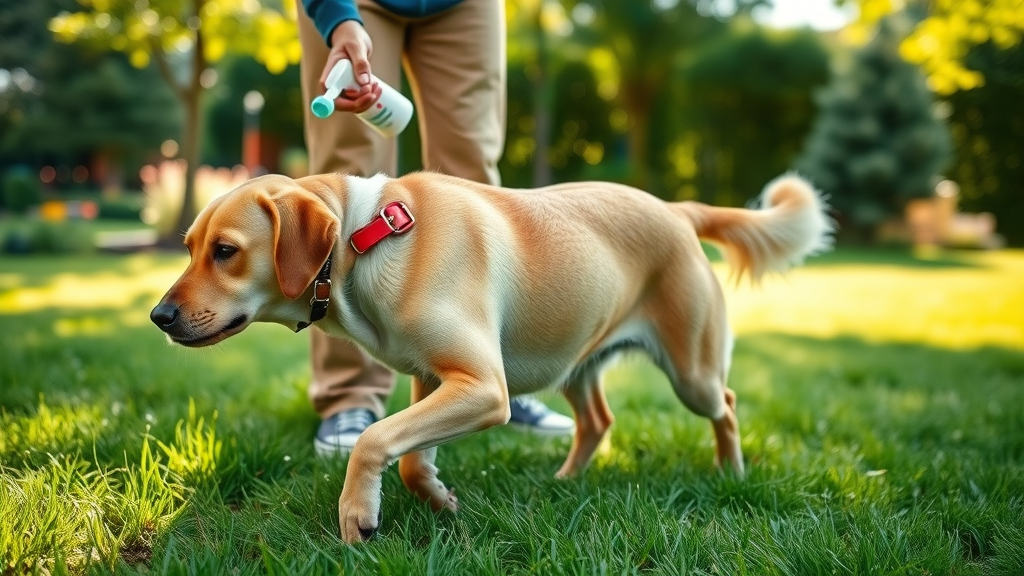
Consult Your Vet: Essential Oils & Dogs
Even if you favor natural remedies, don’t skip the step to consult your vet —especially for puppies, pregnant females, or pets with health concerns. Your veterinarian or a certified holistic vet can offer recommendations for safe essential oil use, proper dilution, and monitoring for adverse reactions. Never substitute veterinary advice with online recipes or anecdotal tips. In uncertain situations, always talk to your vet or professional aromatherapist with experience in animal care to tailor essential oils with dogs to your individual pet’s needs.
- When and why to talk to your vet about essential oils
- Getting professional recommendations on oils with dogs
People Also Ask: Expert Answers On Essential Oils Safe For Dogs
What essential oils are safe to use around dogs?
- Lavender, chamomile, frankincense, and cardamom are generally regarded as safe when properly diluted using a suitable carrier oil.
What oils are not safe to diffuse around dogs?
- Do not use tea tree, peppermint, citrus, pine, wintergreen, or clove oil. These can cause toxicity or allergic reactions.
What is the best essential oil for dog smell in house?
- Lavender essential oil is a favorite for neutralizing odors and offers a calming effect, but use only in well-ventilated areas and in low concentrations.
What happens if dogs smell peppermint oil in the house?
- Dogs may experience labored breathing, drooling, or even toxicity from exposure to concentrated peppermint oil. Always ensure good ventilation and avoid direct diffusion.
Frequently Asked Questions About Essential Oils Safe For Dogs
- How often can I use essential oils with dogs? Use essential oils with dogs sparingly—no more than once daily for topical or aromatic application, and only after observing for any initial reactions. Overuse increases the risk of adverse reactions or cumulative toxicity.
- Can puppies tolerate essential oils? Puppies have highly sensitive systems and should not be exposed to essential oils without direct approval from a veterinarian. Their skin and respiratory functions are still developing, making them more vulnerable to harmful effects.
- How do I introduce new essential oils to my dog safely? Always begin with a patch test using a tiny amount of diluted oil in an area the dog cannot lick. Observe for 24–48 hours for any redness, irritation, or behavioral changes. Slowly build exposure and observe closely for signs of discomfort.
Key Considerations For Using Essential Oils Safe For Dogs At Home
Dog-safe essential oil use is about more than just oil selection. Air circulation and residue left on surfaces can expose pets long after application. Puppies, pregnant or nursing females, elderly, or chronically ill dogs should not be exposed to essential oils without specialist veterinary support. Proper storage—far out of pets’ reach and away from direct sunlight—is essential to prevent accidental ingestion or spills. Households with multiple pets should consider each animal’s sensitivity; what’s safe for one may not be for another.
- Air circulation and residue concerns
- Who should never use essential oils with dogs (puppies, pregnant/nursing females, compromised health dogs)
- Safe storage of essential oils
- Precautions for multi-pet households
Summary: Essential Oils Safe For Dogs—Smart Practices Make Happy, Healthy Lives
- Careless mistakes with essential oils can cause serious harm; education is your pet’s best defense.
- Use only thoroughly researched oils that are safe for dogs, always dilute with a suitable carrier oil, and monitor your pup for any signs of distress.
- Stay current on best practices by consulting reliable veterinary and aromatherapy resources.
Ready To Help Your Dog Feel Their Best? Holistic Wellness Awaits
- Discover safe, effective natural remedies to soothe your dog’s common health issues—no harsh chemicals, just gentle care from nose to tail.
- Give your pup the relief they deserve—explore natural remedies trusted by dog lovers for calm, comfort, and wellness.
- Tired of meds with side effects? Learn how natural remedies can support your dog’s health the gentle, holistic way.
When considering the use of essential oils around dogs, it’s crucial to be aware of both safe practices and potential hazards. The article “Are Essential Oils Safe for Dogs? 7 To Use and 12 to Avoid” provides a comprehensive overview, listing oils that are safe for canine companions, such as lavender and chamomile, and highlighting those that should be avoided, including tea tree and peppermint. ( petmd.com ) Additionally, “Know About the Risks of Essential Oils for Dogs” delves into the potential dangers associated with certain oils, emphasizing the importance of proper usage and consultation with a veterinarian before introducing any essential oils into your dog’s environment. ( webmd.com ) If you’re serious about ensuring your dog’s safety and well-being, these resources will provide valuable insights into the responsible use of essential oils.
 Add Row
Add Row  Add
Add 





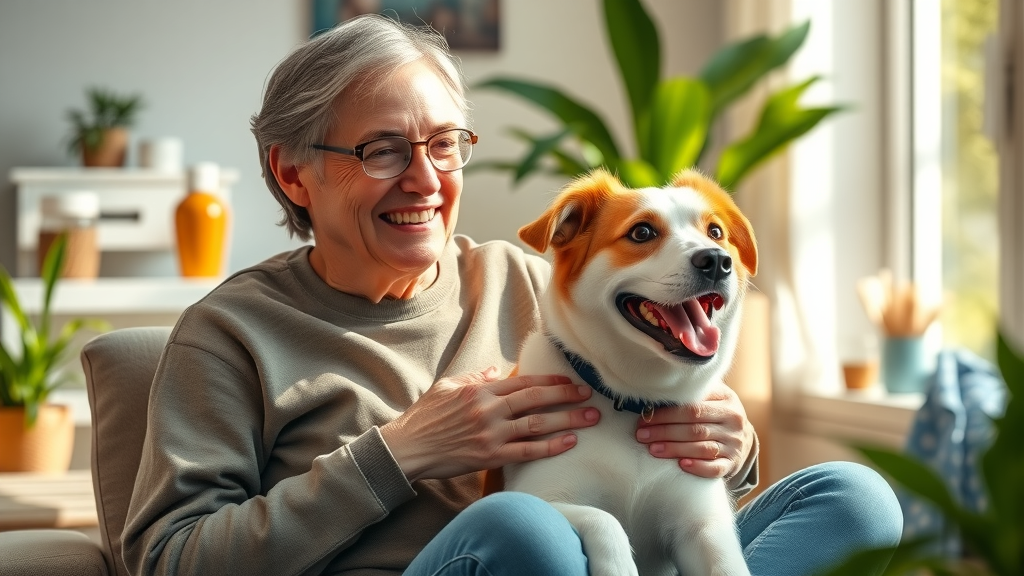
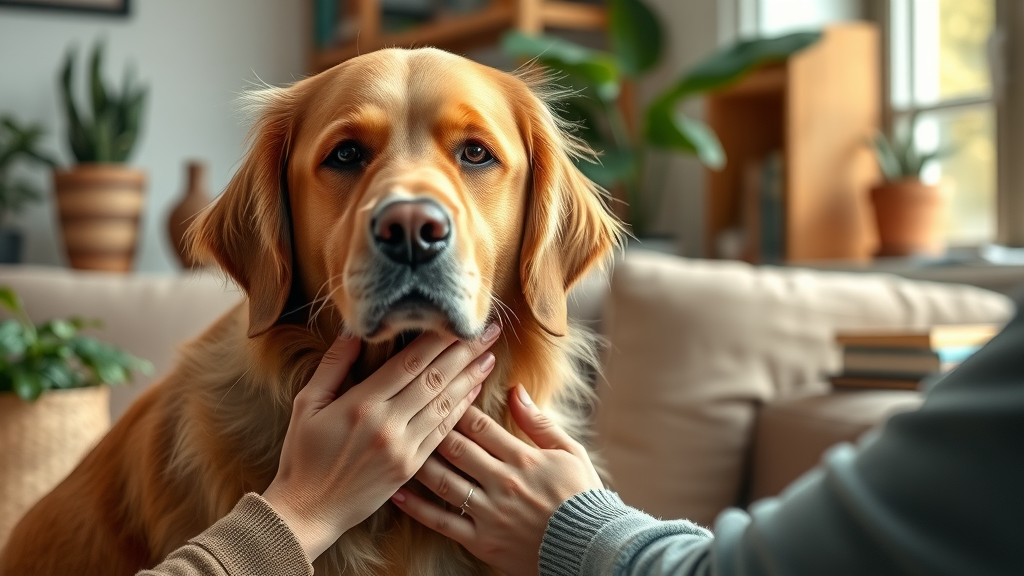

Write A Comment